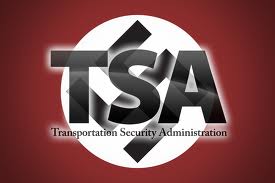
© Unknown
Each week there are reports of the TSA groping children and harassing the elderly, along with stories of internal corruption and theft. To divert attention from this continual bad publicity, the TSA likes to place stories trying to show that its employees sometimes do their job and find a weapon that a passenger forgot to remove from a carry-on bag. (Though how doing one's job is somehow newsworthy is puzzling. Imagine if Domino's issued a press release every time it delivered a pizza.)
Just last week three media outlets reported that the TSA found some pistols. One was in
Tennessee, two in
Florida, and yet another at
Southwest Florida International Airport. In this same week screeners missed a
large knife, allowed a
parolee to make it aboard an aircraft, and a TSA Supervisor in Philadelphia was revealed to be
a known pedophile.
Notably in all of these "good catches" that the TSA cites,
the common thread is that virtually every item has been found using the lowly x-ray belt. The checkpoint belts, which pre-date the TSA by decades, are the only aspect of airport security that have performed reliably and professionally and aren't loathed by travelers.
To date, there have only been three "weapons catches" directly attributable to body scanners, and none found from groin-groping. These include a "
Tactical Spike" (a martial arts weapon) that was found in the sock of a passenger in Pensacola after he was screened by a body scanner, a
.380 Ruger that a Detroit passenger had in an ankle holster, and a
plastic knife in the hem of a woman's shirt, again in Detroit.
The TSA claims that airport screeners found
1,306 guns in carry-on bags in 2011 and that passengers continue to try getting prohibited items onboard, by hiding them in their shoes or using hollowed-out books. (Never mind the fact that guns are metal and are therefore detected by - er - metal detectors.)
Based on three weapons out of 1,306, the scanners account for a dismal 0.07% of gun finds.
When scanners are evaluated on the basis of all items found that the TSA classifies as contraband, including knives, tools, and snow globes, the record becomes even more abysmal. The TSA reports that it confiscates an average of
5 million contraband items each year, yet only 3 items were found in 2011 via scanners and none by invasive pat-downs.
In terms of the 5 million items seized by the TSA last year and the 3 found with scanners, the effectiveness rate of scanners becomes a virtually undetectable 0.00006%.Some of the other items the TSA has protected travelers from include a frosted
cupcake, a child's
light saber toy, a
purse with a gun design in embossed leather, and a mentally disabled man's
plastic toy hammer.
Considering that the TSA has spent approximately $280 million installing 700 scanners at an installed cost of over $400,000 each, there is little justification for this waste, especially given the fact that 99.99997% of prohibited items are discovered by X-ray belts, which cost only $21,000 each.The cost per "catch" on the scanners is currently at $93.34 million per find. While no data is available on the total number of x-ray belts in use in airports, the amount spent on scanners so far would have purchased 13,334 x-ray belts. Enough to install 3.5 additional x-ray belts in each of the 377 airports in the US.
As for the invasive pat-downs inflicted on travelers as a byproduct of the TSA's forcing scanners on us, these have an even more pitiful return on investment. To date, there have been no reports of a weapon or any other banned item being found by the TSA through pat-downs.
Given that the TSA claims to do
60,000 pat downs per day - a number that may have decreased as resistance and bad press have mounted but in any case is impossible to verify - these require on average five minutes of screener time each. Based on a media pay rate of
$35,000 year and 1,920 working hours per year, each hour costs $18.23. The cost for each five-minute pat-down is $1.52, working out to a total cost per day of $91,145.
That's $91,145 every day spent on what are proven to be statistically futile searches of passenger's bodies.And now the TSA wants to double the
security fee from $2.50 per flight to $5 to support what has clearly become a habit of making bad decisions and adopting worthless practices. Sadly, Congress' record of demanding accountability from the TSA is inadequate, if not nonexistent.
U.S. citizens will get an opportunity to decide in November if they want to reward with another term in office the irresponsible politicians who have enabled this stupidity and abuse.
TSA's "argument" to increase security was to protect american citizens from foreign terrorists as well as blocking any person willing to do harm to innocent people. The only thing they achieved is create and spread fear in american minds, leading them to paranoia and there you have them buying weapons to "protect" themselves, seeing anyone as an enemy. I would like to know how many of those weapons were carried by normal american citizens, how many by american criminals and how many by people from foreign countries...
Meanwhile, people must pay a tax for those searches? For being groped? For being exposed to harmful radiation? This is insane.